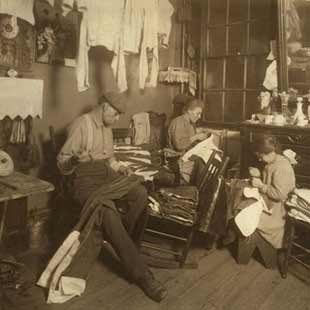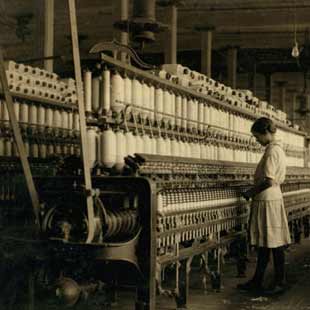As is generally well-known in early decades of the 20th century child labor was a very common practice in many American factories. Many of these children were working full daily shifts in dirty and unsafe conditions. Over time America’s attention was forced upon this issue, in large part by the photography of Lewis Hine. Hine was a photographer for the National Child Labor Committee whose poignant photography spurred movements for change which grew in size and resulted in numerous state and federal laws.



The main piece of federal legislation was the Keating-Owen Child Labor Act which “banned the sale of products from any factory, shop, or cannery that employed children under the age of 14, from any mine that employed children under the age of 16, and from any facility that had children under the age of 16 working at night or for more than 8 hours during the day.” (Kratz) This was a monumental piece of legislation that would have improved the lives of hundreds of thousands of American children. But in Hammer v. Dagenhart the Supreme Court struck it down, a 5-4 decision said that this law was unconstitutional. The Constitution gives Congress the ability to regulate interstate commerce, but according to Associate Justice William R. Day, writing for the majority, production is not commerce and therefore the law is unconstitutional.

So Congress decided to go above the court and amend the Constitution giving Congress the power to regulate child labor. So in 1924, after another child labor law was struck down by the court, the House of Representatives passed a joint resolution, 297-69, and the Senate subsequently passed it, 61-23, and it was sent to the states for ratification. Between 1924 and 1937, 28 states ratified the amendment, 15 rejected it, and 7 did nothing. Maryland is one of the 15 states that outright rejected the amendment (on March 18, 1927 by the Maryland state legislature) and little thought has been put on it since. But the interesting thing about this amendment is that unlike many amendments (see ERA) it has no time limit, this means that any state can ratify it and if it reaches the ¾ threshold it will become part of the Constitution.
